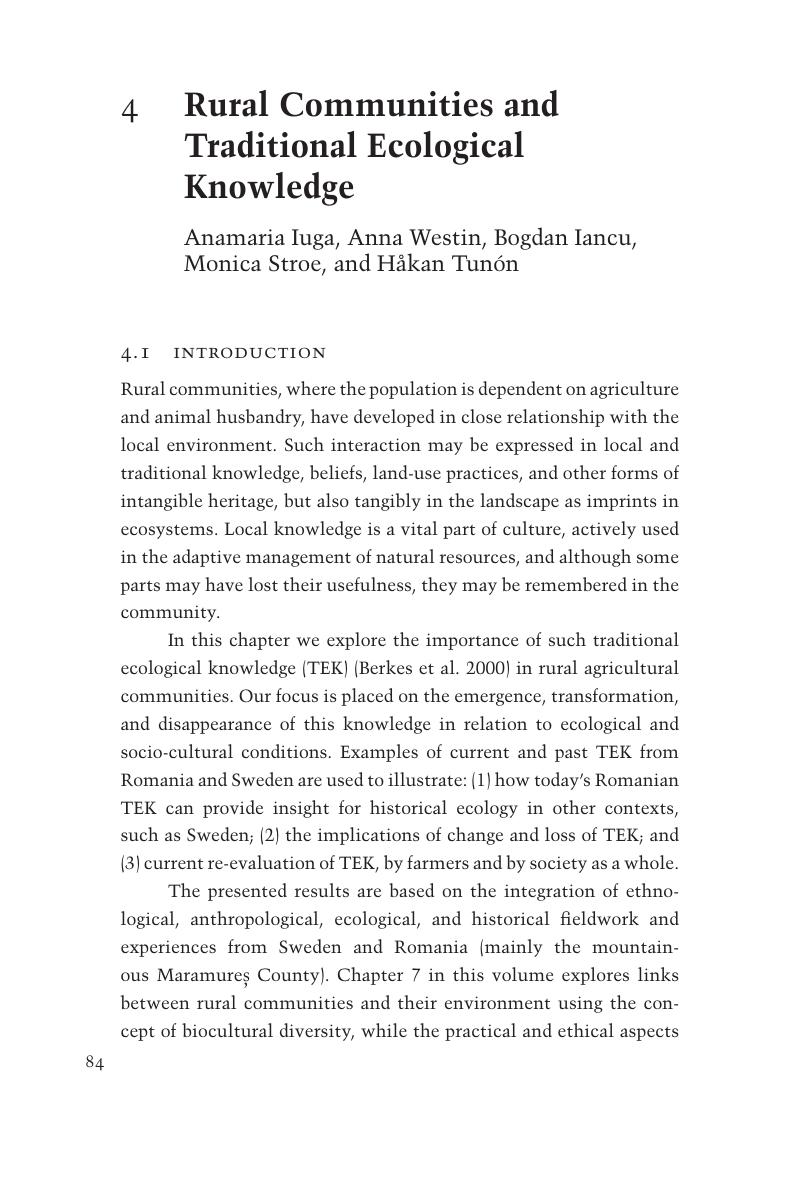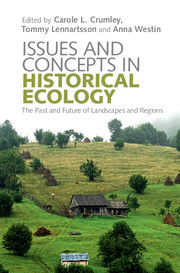Book contents
- Issues and Concepts in Historical Ecology
- Issues and Concepts in Historical Ecology
- Copyright page
- Contents
- Illustrations
- Contributors
- 1 Is There a Future for the Past?
- Part I Challenges: Time and Memory
- 2 Historical Ecology and the Longue Durée
- 3 Human and Societal Dimensions of Past Climate Change
- 4 Rural Communities and Traditional Ecological Knowledge
- 5 Baselines and the Shifting Baseline Syndrome – Exploring Frames of Reference in Nature Conservation
- Part II Approaches: Concepts and Methods
- Part III Moving Forward
- Index
- References
4 - Rural Communities and Traditional Ecological Knowledge
from Part I - Challenges: Time and Memory
Published online by Cambridge University Press: 10 November 2017
- Issues and Concepts in Historical Ecology
- Issues and Concepts in Historical Ecology
- Copyright page
- Contents
- Illustrations
- Contributors
- 1 Is There a Future for the Past?
- Part I Challenges: Time and Memory
- 2 Historical Ecology and the Longue Durée
- 3 Human and Societal Dimensions of Past Climate Change
- 4 Rural Communities and Traditional Ecological Knowledge
- 5 Baselines and the Shifting Baseline Syndrome – Exploring Frames of Reference in Nature Conservation
- Part II Approaches: Concepts and Methods
- Part III Moving Forward
- Index
- References
Summary

- Type
- Chapter
- Information
- Issues and Concepts in Historical EcologyThe Past and Future of Landscapes and Regions, pp. 84 - 111Publisher: Cambridge University PressPrint publication year: 2017
References
- 1
- Cited by

